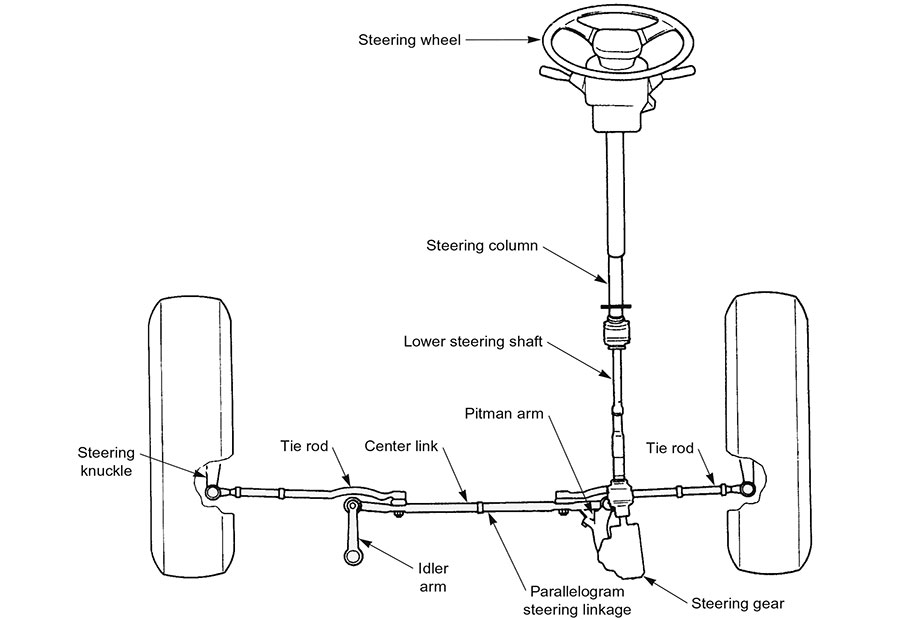A series of devices used to change or maintain the direction of the car’s driving or reversing is called the steering system.

The function of the car steering system is to control the driving direction of the car according to the wishes of the driver.
When the car is in the process of driving, it is necessary to change the driving direction. This is the so-called steering. The component that completes the driver’s will to turn the car is the steering part. The steering member converts the driver’s action of turning the steering wheel into a wheel deflection action.
The steering system must assist the tyre in proper contact with the road surface. In order to maximize the life of the tires, the steering system should maintain a proper angle between the tires between driving turns and straight ahead. The steering system must also allow the driver to have some sense of road (information about the condition of the road through the steering wheel).
Type of steering system
All steering systems contain several common parts. Every steering system, regardless of type, will have a steering wheel, steering shaft and steering column, universal joint, steering arm and ball joint.

According to the source of steering power, the steering system of the automobile is divided into two categories: mechanical steering and power steering. According to the help classification, it can be divided into two types: mechanical (without assistance) and dynamic (with assistance). The power steering can be further divided into Hydraulic Power Steering (HPS) system and Electro-hydraulic auxiliary steering (Electro). -Hydraulic Power Steering (EHPS) systems and Electric Power Steering (EPS) systems.
In simple terms, the mechanical steering system uses the driver’s physical strength as a steering energy source, and all transmission members are mechanical. The power steering system is a steering system that uses the driver’s physical strength and the power of the engine (or motor) as the steering energy. It is formed by adding a set of steering force adding device on the basis of the mechanical steering system.
In terms of rotating systems, modern cars and light trucks usually use two main types of steering systems: the Rack-and-Pinion Steering and the Conventional Steering (or parallelogram linkages) steering system.
Rack-and-Pinion Steering
The rack and pinion steering system is a simple system that directly converts the rotation of the steering wheel into a linear motion on the wheel. The function of the steered gear is to convert the rotational movement of the steering wheel into a horizontal straight-line motion, which in turn promotes the third group of steering linkages, which drives the front wheels to turn left and right.


The outer tie rod ends are mainly connected to the steering knuckle through a ball joint.
圖中外拉桿(outer tie rod ends)端部,主要透過球接頭(ball joint)連接到羊角(steering knuckle)上。
Parallelogram linkage

Regardless of the type of steering system, vehicle steering needs to be linked to the wheels through components such as steering linkages to complete the car’s steering. The connection of these components is usually through the ball joint structure, bushings and other components, while achieving the requirements of free rotation, shock absorption. A good car steering system must be stable, the vibration and swing of the wheels should not be transmitted to the steering wheel, the operation is light and flexible, the direction recovery is just right, the turning radius is small, and the entire steering system has good stability. In addition to the design, these features have a great influence on the quality of parts and components. This is also accumulated decades of manufacturing experience and technology.
Through good materials, precise processing and correct assembly, each component can be ensured to function, and the vehicle can be steadily and correctly steered, providing a smooth driving feel.